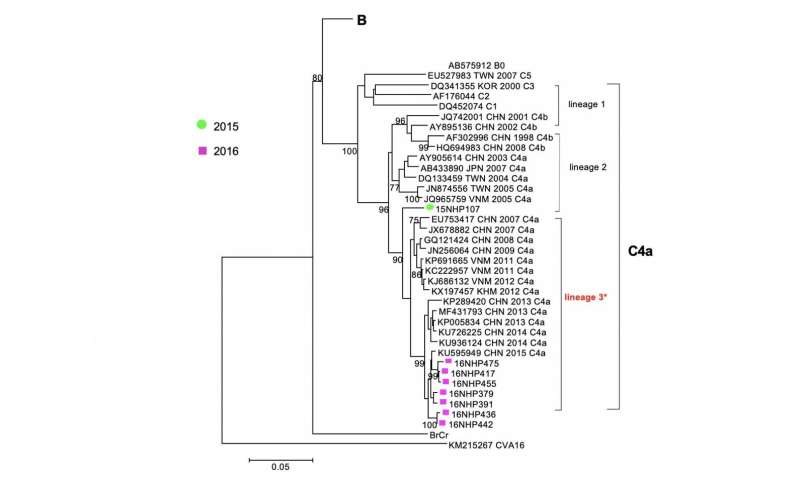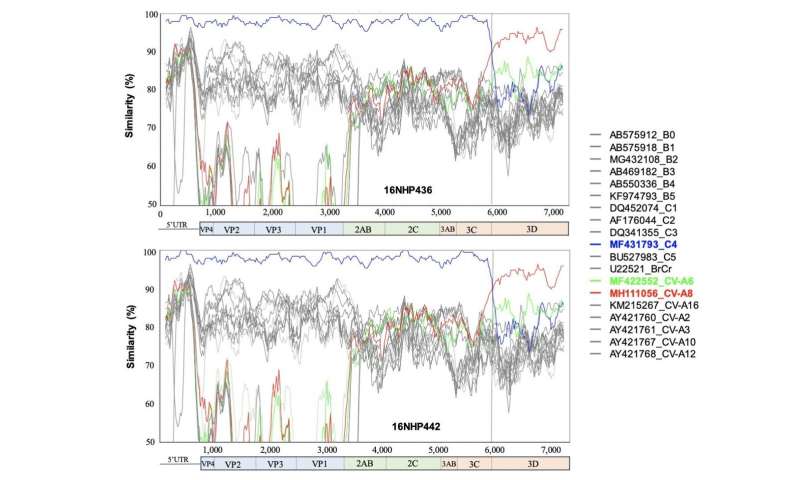
Hand-foot-and-mouth disease (HFMD) is an acute viral infection that usually affects infants and children of less than five years. In a study published in Scientific Reports in January 2020, an international research team including Kanazawa University, the Vietnam National Hospital of Pediatrics, Tokyo Metropolitan Institute of Medical Science, Nagasaki University and Hanoi Medical University, has demonstrated the emergence of a new enterovirus (EV) A71-C4 lineage during the 2015-2016 outbreak of HFMD in northern Vietnam. Further, through clinical studies and an experimental mouse model, they have shown that the EV-A71 C4 subgenotype may be more virulent than the B5 subgenotype.
HFMD is a common contagious childhood illness caused by enteroviruses of the family picornaviridae, the most frequently reported being EV-A71, coxsackievirus A16 (CV-A16), and CV-A6. It typically runs a mild self-limiting course; however, in rare cases it may cause inflammation of the meninges and the hindbrain, resulting in paralysis, cardiopulmonary complications, or even death. While most cases resolve within a few weeks, EV-A71 infections may be more severe, with serious complications.
To determine the epidemiological characteristics and identify the various enterovirus strains responsible for HFMD in northern Vietnam, the research team collected and analyzed throat and rectal swabs from 488 affected children in Hanoi.
Son T. Chu, lead author of the study, explains: “CV-A6 was the most common strain, followed by EV-A71. Of these EV-A71, 92.1% were the B5 subgenotype and 7.9% were the C4 subgenotype. Whole-genome sequencing showed that seven of the eight C4a strains formed a new lineage, including two possible recombinants between EV-A71-C4 and CV-A8 strains.”

The researchers evaluated the proportion of inpatients as a clinical measure of virulence. Hospitalized children with EV-A71 significantly outnumbered those with CV-A6. Further analysis among the EV-A71 infected children showed that the proportion of inpatients among C4-infected was significantly higher than that among B5-infected, implying greater virulence of C4 than B5.
“As the number of C4-infected patients was small, we applied another technique to compare virulence,” says Kyousuke Kobayashi, neurovirologist and lead author. “We inoculated transgenic mice susceptible to EV-A71 infection with viral isolates and monitored them for limb weakness, acute flaccid paralysis, body weight and death. We found increased paralysis and significantly higher mortality among mice infected with C4 strains than those infected with B5 strains.”
Source: Read Full Article